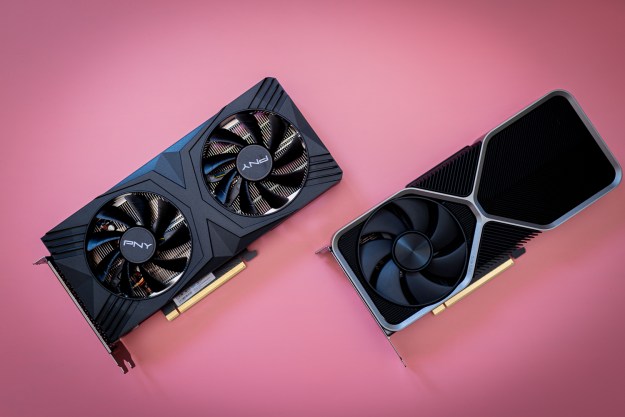EVGA is planning to launch three graphics cards based on Nvidia’s GTX 1080 Ti flagship reference design, offering different levels of performance and cooling options. For those who really care about the look of their system’s internals too, each card comes with a unique lighting profile.
When Nvidia debuted its GTX 1080 Ti, it was immediately clear it was the new king of the graphics card pile. Its performance even beats the monstrously expensive GTX Titan X, which had many people surprised. The 1080 Ti Founders Edition is set to go on sale at the end of March and will no doubt draw a lot of interest from early adopters, but many people will be eagerly awaiting cards from third-party manufacturers, so EVGA is looking to generate some buzz before its release.
The first in its trio of new cards is the GTX 1080 Ti SC Black Edition, which raises clock speeds from the stock of 1,480/1,582 MHz on the core and memory respectively, to 1,556/1,670MHz. That nice bump to its clock speeds doesn’t do anything to the max power draw of 250w, though EVGA has installed its own dual-fan cooler on the design.
Moving up the range, the 1080 Ti SC2 maintains the same clock speeds, LED configurations and color (white), but where it differs is in its sensor suite. EVGA claims that it comes with nine different temperature sensors, which could make improving its cooling with aftermarket heatsinks or new directional fans, a little bit easier.
The big daddy of the new range is the GTX 1080 Ti FTW3, which ups the ante with an additional cooling fan and increases clock speeds a little further to 1,569/1,683 Mhz. It also has dual BIOS chips, which lets tweakers flash one with something experimental, without the fear of bricking the card and RGB lighting.
Power-wise, we’re told that its max draw has still yet to be determined, which suggest it’s more than the 250w standard for a GTX 1080 Ti. We do know, however, that it will require twin eight-pin connectors, so make sure your PSU is compatible before buying.
Unfortunately, right now we don’t know when you will be able to do so, though, as we don’t have any pricing or availability dates just yet. We will update this piece when they appear.
When they do release, each card will come with free copies of Rad Rogers and For Honor or Ghost Recon: Wildlands.
Editors' Recommendations
- The best GPUs if you’re upgrading from a GTX 1650
- How I conceded to the RTX 4060 Ti
- Here’s why I’m glad Nvidia might kill its most powerful GPU
- Here are 5 GPUs you should buy instead of the RTX 4060 Ti
- Why the Nvidia RTX 4060 Ti simply isn’t enough for 2023





